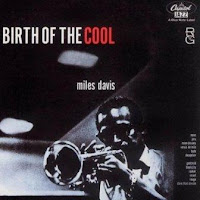
 The trumpet (and sometimes its cousins the cornet & flugelhorn) has been one of the leading instruments of jazz since the beginnings of the art.
The trumpet (and sometimes its cousins the cornet & flugelhorn) has been one of the leading instruments of jazz since the beginnings of the art.New Orleans Jazz (also called "traditional" jazz) from the turn of the last century featured trumpet (or cornet), clarinet, trombone, banjo, and tuba or bass. Sometimes the piano was also included, but some theoroize that the New Orleans combo style is an outgrowth of the brass bands that accompanied funeral processions. The style died out when big bands took over the jazz scene in the 30s and 40s, but was revived in the 40s and 50s. Revivalists continue to keep the tradition alive to this day.
In the "Swing" or "Big Band" era, each instrument could be heard in groups ("sections") but some trumpet players played solos from within the section. A few others came to the front as band leaders. One of the most famous was Harry James, who often performed solos with the Benny Goodman Orchestra.
 Although the performers were equal partners in combos of the Bebop (or "Bop) era of the 1950s, some trumpet players became stars in this era. Most notably, Miles Davis began his long career in the 1940s and continued until his death in 1991. He collaborated with top performers of each era, and became one of the most influential musicians of jazz through his revolutionary changes of style. He brought in strands from other popular music styles, creating the controversial "fusion" movement.
Although the performers were equal partners in combos of the Bebop (or "Bop) era of the 1950s, some trumpet players became stars in this era. Most notably, Miles Davis began his long career in the 1940s and continued until his death in 1991. He collaborated with top performers of each era, and became one of the most influential musicians of jazz through his revolutionary changes of style. He brought in strands from other popular music styles, creating the controversial "fusion" movement.
Click these links to search CardCat for recordings of the jazz trumpet players listed:
Louis Armstrong
Chet Baker
Bunny Berigan
Bix Beiderbecke
Clifford Brown
Donald Byrd
Miles Davis
Wild Bill Davison
Harry "Sweets" Edison
Roy Eldridge
Art Farmer
Maynard Ferguson
Dizzy Gillespie
Al Hirt
Freddie Hubbard
Thad Jones
Wynton Marsalis
Lee Morgan
Fats Navarro
Red Rodney
Arturo Sandoval
Woody Shaw
Clark Terry

No comments:
Post a Comment